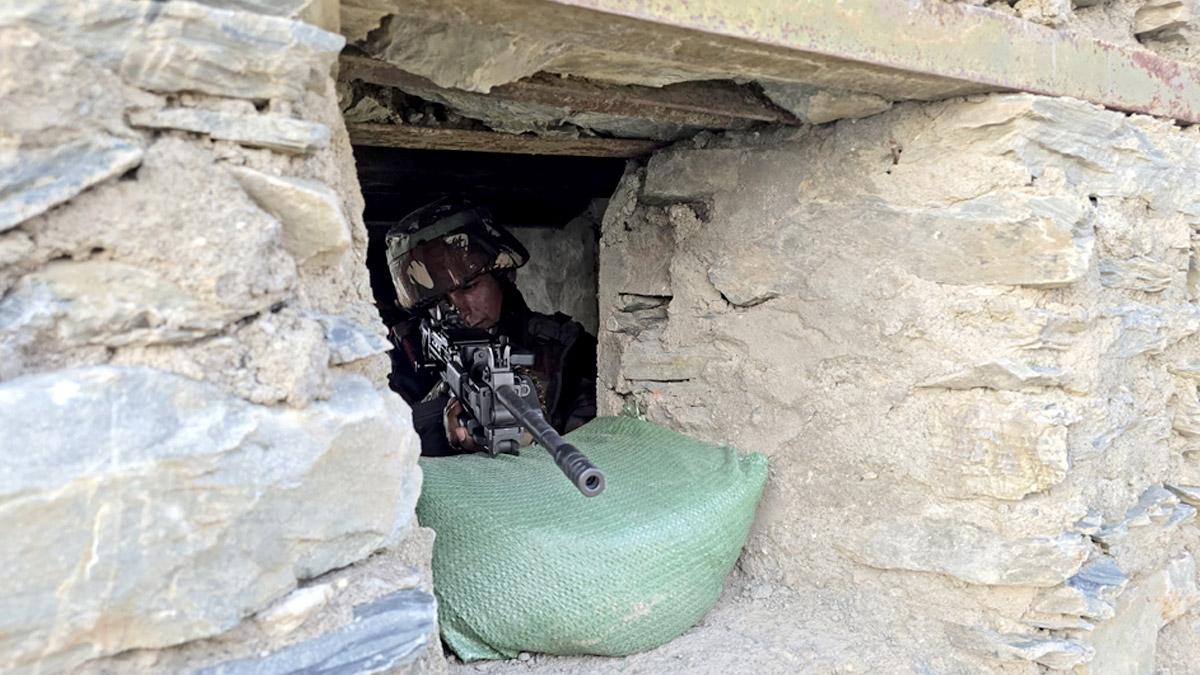'Will this near-war, India's strongest military response so far, buy India another seven years of deterrence?' asks Shekhar Gupta.

A simple question, days after the Indian Air Force and Indian Army struck nine terror bases in Pakistan: Why do nations have armies?
Is it to fight wars? Only morons -- and some teenagers high on testosterone -- would say that. Self-defence? That's for small nations. A great nation arms itself for a higher purpose.
That higher purpose is to prevent wars. The stronger the nation, the stronger the army it needs -- not to conquer territory or bully others, but to keep out distractions from its sovereign spaces. In one word: Deterrence.
A question then follows: Have we achieved deterrence vis-a-vis Pakistan? The Pahalgam attack showed starkly that we lacked it.
Did we achieve it when time was called after the skirmishes?
There is much celebration of revenge, especially on social media, which conducted its own private war with the Pakistanis, and where cessation of hostilities is yet to be called.
It is understandable that after the Pahalgam outrage, our debate was overtaken by anger. All sides, it seemed, were baying for revenge.
But sovereign nations cannot reduce themselves to mere revenge. They need more. Deterrence, we said early on. Add to it a punitive ability.
That is also the essence of the bhay bin hoye na preet (nobody loves you until they fear you) line from the Ramcharitmanas that Air Marshal A K Bharti, director general air operations, quoted at the tri-service briefing.
The Pakistani response to the initial Indian strikes on terror bases showed that deterrence was not yet in place.
The punitive power was underlined on the morning of May 10, with humiliating targeting of the Pakistan air force's most vaunted bases, air defences and missile batteries.
This was a formidable punitive package.
And whatever keyboard warriors and prime-time gladiators might say, at the top levels, the government messaging wasn't 'revenge' but deterrence: Every terror act will henceforth be an act of war; our response will be quick and disproportionate -- so cease and desist.
The facts and history, however, do not convince us that an Indian deterrence against the use of terror as State policy has been established.
We need to assess what India has achieved by continuously upping the kinetic response level since 2016.
Uri, Pulwama-Balakot in 2019, and Pahalgam-Operation Sindoor in 2025. We should, in fact, begin earlier, with the Parliament attack on December 13, 2001.
That was the beginning of the Pakistani Army/ISI proxies, inaptly described as non-State actors, creating war-like crises.
India countered with full military mobilisation. It brought India relative peace till 26/11, in 2008. A deterrent with a seven-year use-by date.
That India caught Ajmal Amir Kasab alive, produced phone recordings, and that American citizens were killed and Jews specifically targeted shamed Pakistan and brought global opprobrium. Another eight years of patchy peace.
The next round then came with Pathankot and Uri in 2016. The response was surgical strikes.
It gave Pakistan an escape route, or what is now called off-ramp, to say that nothing had happened.
And Pulwama in 2019 drew the Pakistan air force's response, after the Balakot Jaish-e-Mohammed seminary raid.
Yet, the point of a visible and undeniable Indian military response was made. But Pakistan also got a prisoner of war to flaunt.

See the pattern. Pakistan and its proxies are prone to a severe, and predictable seven-year itch.
You can check out the dates again. Will this near-war, India's strongest military response so far, buy India another seven years of deterrence?
India can do better.
Soon enough, the ISI and its proxies will again be here.
They dream of a jihad with jets, tanks and 'hopefully' (for them), nukes. It's their fantasy and 'destiny'.
A war with India is inevitable, it is 'written', so why not now?
Why leave it for when the power gap becomes wider?
Two sides of the same coin need looking at: What will they do in these five to seven years of respite and will we prepare to fight back, or deter?
This is how they will see it: Strengthen ourselves in critical areas, game India's response when the 'next time' comes.
Deny India its planned, predictable response.
And how does India respond? We keep upping the risk level, just to buy some more time?
It is like constantly running around the same circle, or continuously hopping in and out of the same square one.
This is not how an aspiring big power and a bountiful economy plans security for its future generations.
It can't leave them prisoners to this same seven-year itch.
That's why, after this is over, look generations ahead. Spend more on defence, taking it up to 2.5 per cent of your rising gross domestic product (GDP) in the next three years.
This year's 1.9 per cent of GDP is, hold your breath, even lower than it was under Jawaharlal Nehru the year before the 1962 War.
Invest this additional money in whatever will build critical abilities to punish and deter the next time, without leaving Pakistan any scope to retaliate.
The potential to block the Malacca Strait can wait.
In any case, we must watch whether the Quad outlives Donald Trump.
The central point is, we can't always keep ruing our two-front situation and spreading ourselves thin.
Focus all fresh, additional spending on just one front for five years.
The IAF must get more and even longer range standoff weapons, fill up its number-plated squadrons.
The target has to be to switch more than half its fighter forces into genuine beyond-visual-range (BVR) capability.
Swadeshi or imported doesn't matter. India can't wait, because the bad guys won't.
If long-range artillery is to be an instrument of punishment, stop buying a hundred pieces at a time like kids at Hamleys.
Buy a thousand. When the Pakistanis fire 10 guns across the LoC, you fire 200.
The fear of massed, long-range artillery is a frightening deterrent.
India can afford it. And it isn't even escalatory, because it will only be in response to the gravest provocation.

If you do this right, this one front would cease to matter. That will be one way out of our two-front situation, or triangulation between Pakistan and China.
The other option, which our successive prime ministers have been searching for over 50 years since the Simla Accord -- of resolving our differences with one of the two adversaries -- has resulted in frustration of this crippling strategic burden.
The Chinese see no reason to make permanent peace with us because Pakistan is their cheap instrument to keep us off balance.
Pakistan has increasingly been taken over by 'its written in our destiny' walas.
India has to change the game with additional defence spending singularly focused on making the Pakistan 'front' inconsequential.
It will also impose a cost on Pakistan if they want to compete. Remember that in the India-Pakistan power balance, the only deterrence that's relevant is conventional.
By the time we talk nuclear, we are all vaporised anyway. It is unlikely the Americans will give Pakistan anything new.
The Chinese and Turks will, but unlike the US, they don't give gifts.

From where will Pakistan find that money in a stalled economy with a fast-growing large population? India does not hanker for any Pakistani territory.
It just needs to de-triangulate itself. That's the cost India must impose on Pakistan. Not for one year, but for the next 25.
Or this will be a perpetual roadblock to Viksit Bharat. A big economy with faith in its future needs defence that isn't just impregnable, but deters at least one of its two adversaries.
So far, the Modi government has choreographed this well. Next time, however, a new playbook will be needed.
Because, be sure, there will be a next time. The lesson of Operation Sindoor is to promise ourselves that 'that' next time will never come.
By special arrangement with The Print
Feature Presentation: Aslam Hunani/Rediff











